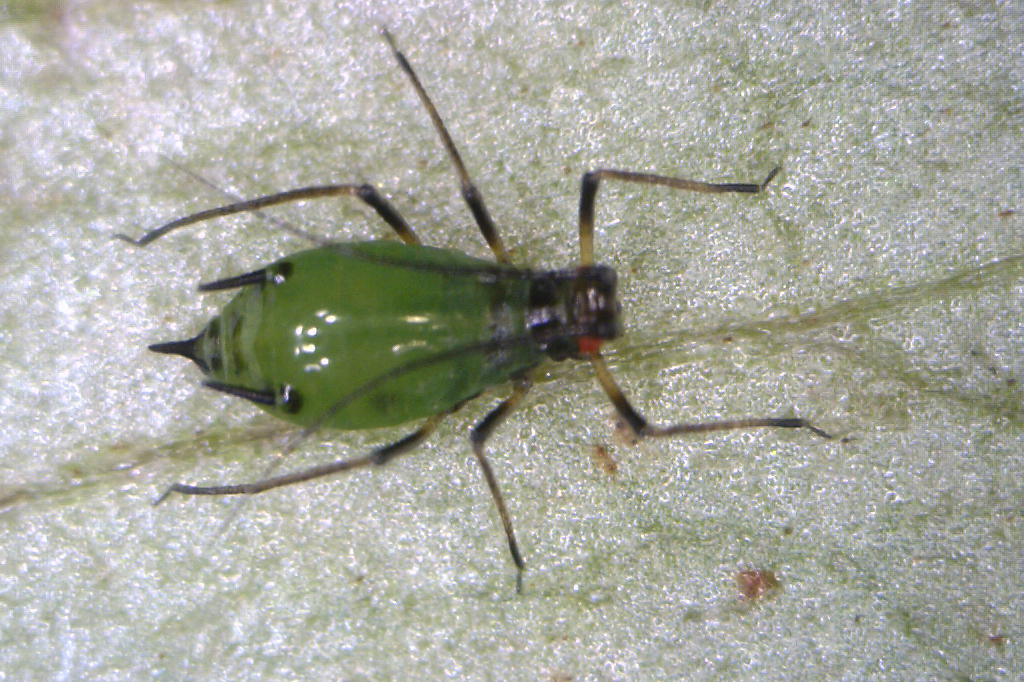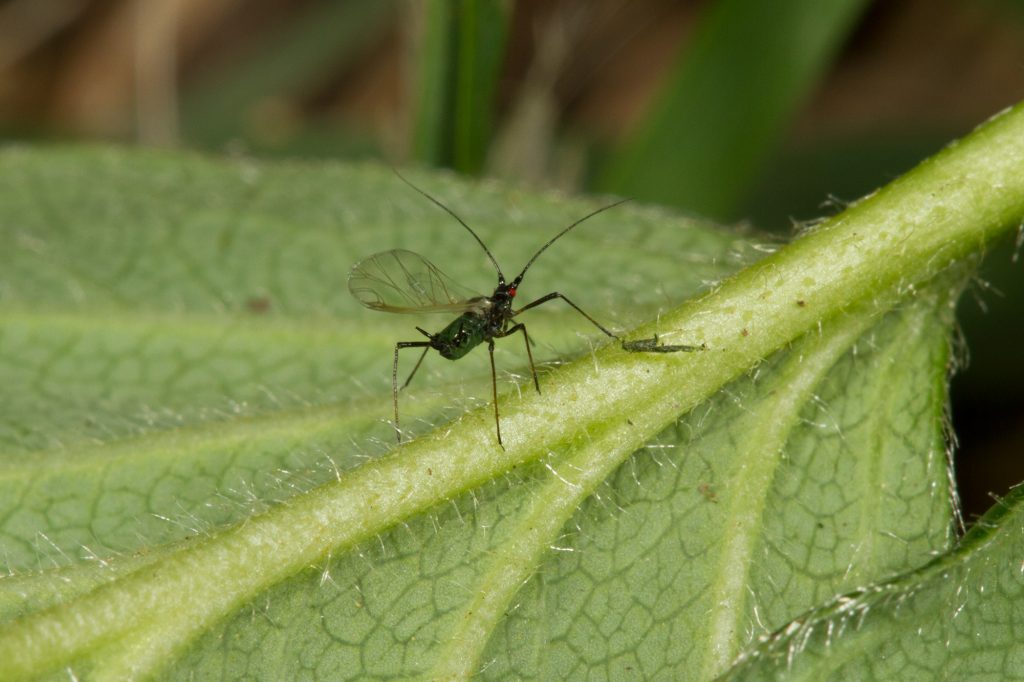When finding aphids in south-eastern pulse crops, the usual suspects are cowpea aphid, bluegreen aphid, pea aphid and sometimes green peach aphid.
But there is a lesser-known aphid in Victoria and southern NSW which can feed on some pulses, particularly faba bean and vetch.
The aphid is the faba bean aphid (Megoura crassicauda) and we are very interested to know if you see it in crops.
Faba bean aphid activity in Australia
The faba bean aphid is native to north-east Asia and was considered an exotic pest in Australia prior to its detection on broad bean plants in metropolitan Sydney in October 2016.
After this initial detection in Australia, eradication of the faba bean aphid was deemed unfeasible based on previous unsuccessful attempts to eradicate exotic aphid species overseas.
It soon became apparent that the aphid had expanded its range to the northern cropping region after heavy infestations were found in faba bean trial sites at Tamworth and in Breeza in September 2017. Strangely there were no reported observations in 2017, 2018 or 2019.
However, since 2020, incidences of the aphid have increased with several populations observed around NSW and Queensland. And this winter there have been outbreaks reported in north-west NSW and further detections around Gilandra and Baradine in the NSW Central West and Ganmain in the Riverina.
The known distribution of the faba bean aphid also extends to Victoria with the aphid identified on broadbeans in Melbourne’s northern suburbs in 2020. Submissions made to the citizen science platform iNaturalist also reveal aphids, which appear to be the faba bean aphid, on common vetch and broadbeans around Melbourne.
Keep an eye out this spring
We don’t have a good understanding of the current distribution and significance of the faba bean aphid in south-eastern Australia. Prior to this year, the PestFacts south-eastern team hadn’t received reports of their presence in field crops in Victoria or southern NSW, despite being spotted in suburban backyards.
There was ample opportunity for a green bridge to flourish with the wet summer this year, which is a factor that tends to bolster aphid numbers. Because of this, it’s possible we could see the faba bean aphid pop up in south-eastern crops this year.
As spring approaches and temperatures become milder and aphid numbers in general increase, it is worthwhile keeping an eye out for the faba bean aphid.
NSW DPI researchers (Duric et al. 2022) have conducted virus transmission studies showing that the faba bean aphid is a vector of both Bean leaf roll mosaic virus (BLRV) and Pea seed-borne mosaic virus (PSbMV).
There is also the potential for direct damage feeding damage. Observations from the northern cropping region have shown that faba bean aphid can form hot spots in crops, and if feeding is intensive, the plants can show symptoms of necrosis, wilting, stunting and defoliation.
Faba bean aphid hosts
The faba bean aphid is oligophagous, meaning that it feeds on specific plant species. Its host range is thought to be largely restricted to the Vicia genus of plants, which includes faba beans, broad beans, and vetch.
Researchers at the NSW DPI (Duric et al. 2022) have been studying the host range of the faba bean aphid in the northern cropping region and have made the following observations:
- Faba bean and vetch are primary hosts
- Field pea and lentil, and to a lesser extent, lucerne and subclover can aid survival and reproduction
- Chickpeas and lupins don’t appear to be hosts
- Annual legume weeds such as woolly pod vetch (Vicia villosa) can act as a non-crop host
Faba bean aphid identification
The faba bean aphid has a very distinctive appearance. Wingless and winged forms adults are dark green and spindle-shaped, with long antennae that surpass the length of their bodies.
The head, cauda (‘tail’), siphunculi (‘exhaust pipes’), antennae, and legs are black.
While hard to see with the naked eye, the faba bean aphid has vibrant, red eyes.
They are relatively large aphids, growing to over 3 mm in length.


Submit your pulse aphid photos
To help keep an eye on faba bean aphid movements in southern NSW and Victoria, if you spot aphids in pulse crops this spring, we encourage you to take a snap and send it to us!
You can:
- Text us on 0484 310 697
- Tweet us @cesaraustralia
- Email us pestfacts@cesaraustralia.com
Acknowledgments
Host and virus transmission findings were drawn from Duric Z, George J and van Leur J, Megoura crassicauda Mordvilko (Hempitera: Aphididae), a potential threat to Faba bean industry in New South Wales. General and Applied Entomology 50: 11-17 (2022) (published on-line 17.12.2021).
Thanks to Dr Zorica Duric (NSW DPI) for reviewing this article and Rohan Brill (Brill Ag) for field observations.
Cover image: Photo by NSW DPI





